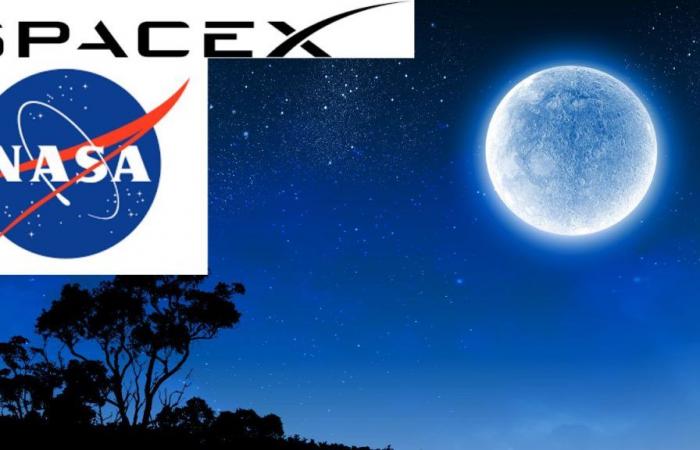SpaceX, the aerospace company led by Elon Musk, has established itself as a player preponderant in the field of space exploration. With the development of the Starship lunar elevator (HLS), the company is taking a step significant in collaboration with NASA for future lunar missions. This module, designed to transport astronauts from lunar orbit to the surface of the Moon, recently underwent extensive testing by NASA to ensure its functionality and safety.
HLS Design and Capabilities
SpaceX’s HLS is not just a vehicle, but a real forward base for lunar missions. Equipped With a modular architecture, it is designed to make several round trips between lunar orbit and the surface without requiring refueling from Earth.
- Carrying capacity: The module can carry up to 100 tons of equipment and accommodate several astronauts.
- Propulsion technology: It uses Raptor engines, specially adapted for lunar landings and takeoffs.
- Life Systems: Equipped with advanced life support systems for extended missions.
These characteristics make HLS a tool polyvalent et robust for lunar exploration.
Collaboration with NASA
NASA chose SpaceX for the development of the HLS as part of its Artemis program, which aims to return humans to the Moon by 2024. The collaboration is based on a $2.89 billion contract, highlighting the scale and the importance of the project.
- Objectives of the Artemis program: Establishing a sustainable human presence on the Moon.
- SpaceX’s role: Provide an efficient and safe transportation system between orbit and the lunar surface.
The American space agency is carrying out rigorous evaluations HLS prototypes to ensure their compliance with strict requirements in terms of safety and performance.
Technical challenges and innovations
The development of HLS cannot be done without encounteringimposing challenges techniques. The need to design a vehicle capable of precise maneuvering on the lunar surface, where gravity is only one-sixth that of Earth, imposes innovations significatives.
- Mastering Lunar Gravity: Adaptation of propulsion and control technologies.
- Protection against radiation and micrometeorites: Reinforcement of the thermal and structural shield.
SpaceX is also integrating recovery and reuse technologies, helping to reduce costs and increase frequency of missions.
Testing and evaluation by NASA
Before being put into service, the HLS undergoes a series of exhaustive tests to validate every aspect of its design.
- Tests de simulation: Virtual environments to test systems in extreme conditions.
- Flight tests: Unmanned launches to assess the actual performance of the spacecraft.
These tests are crucial to ensure the success of future lunar missions and guarantee the safety of astronauts.
Impact et perspectives futures
Starship lunar elevator set to play role major in the lunar colonization strategy of NASA and SpaceX. Through its ability to carry out repeated and economical missions, it is envisaged as a cornerstone of future lunar infrastructure.
- Economic development of space: Exploitation of lunar resources.
- Permanent bases on the Moon: Construction of habitable structures for extended stays.
Ultimately, SpaceX’s HLS is not only a technical advance, but also a vector of transformation of the dynamics of space exploration.
SpaceX’s Starship Lunar Elevator represents a remarkable advancement in our quest for space exploration. Together with NASA, SpaceX continues to push the boundaries of what’s possible, promising to reshape our relationship with space. Ongoing testing and development on the HLS is a testament to the continued commitment to a future where humanity expands beyond Earth, opening new frontiers for future generations.






